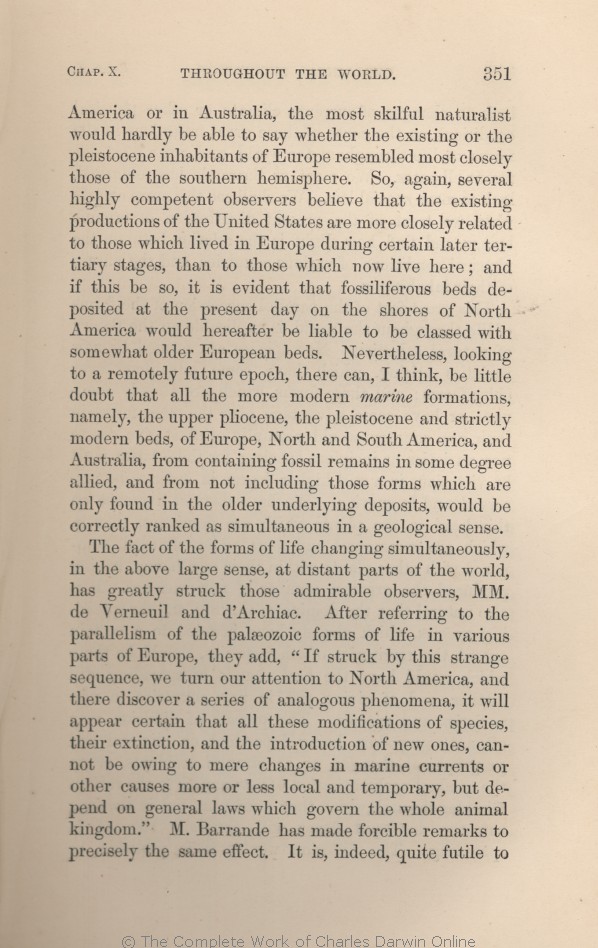America or in Australia, the most skilful naturalist would hardly be able to say whether the
existing | existing 1859 1860 1861 1866 | | present 1869 1872 |
| observers 1859 1860 1861 1869 1872 | | observes 1866 |
| believe 1859 1860 1861 1866 | | maintain 1869 1872 |
| later 1859 1860 1861 1866 | | late 1869 1872 |
| those which now live here; 1859 1860 1861 1866 |
| the present inhabitants of Europe; 1869 1872 |
| deposited at the present day 1859 1860 1861 1866 |
| now being deposited 1869 |
| now deposited 1872 |
| can, 1859 1860 1861 1866 | | can 1869 1872 |
| I think, 1859 1860 1861 1866 | I think, 1869 1872 |
| only found 1859 1860 1861 1866 | | found only 1869 1872 |
|
|
The fact of the forms of life changing simultaneously, in the above large sense, at distant parts of the world, has greatly struck those admirable observers, MM. de Verneuil and d'Archiac. After referring to the parallelism of the palæozoic forms of life in various parts of Europe, they add,
"If | "If 1859 1860 1861 | | "If, 1866 1869 1872 |
|









